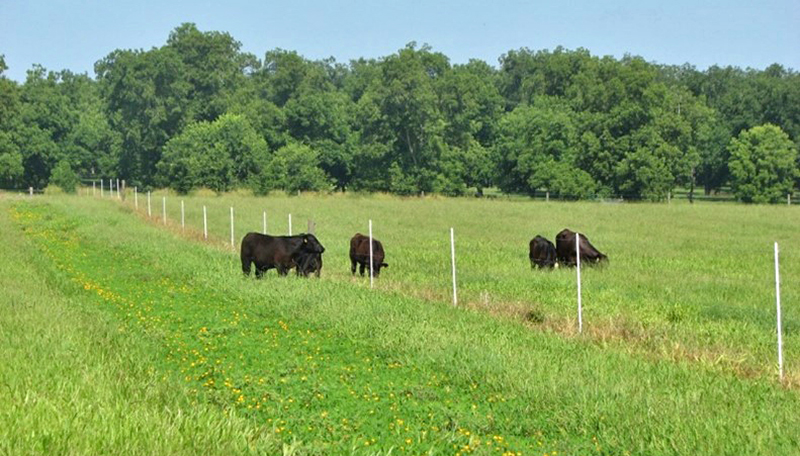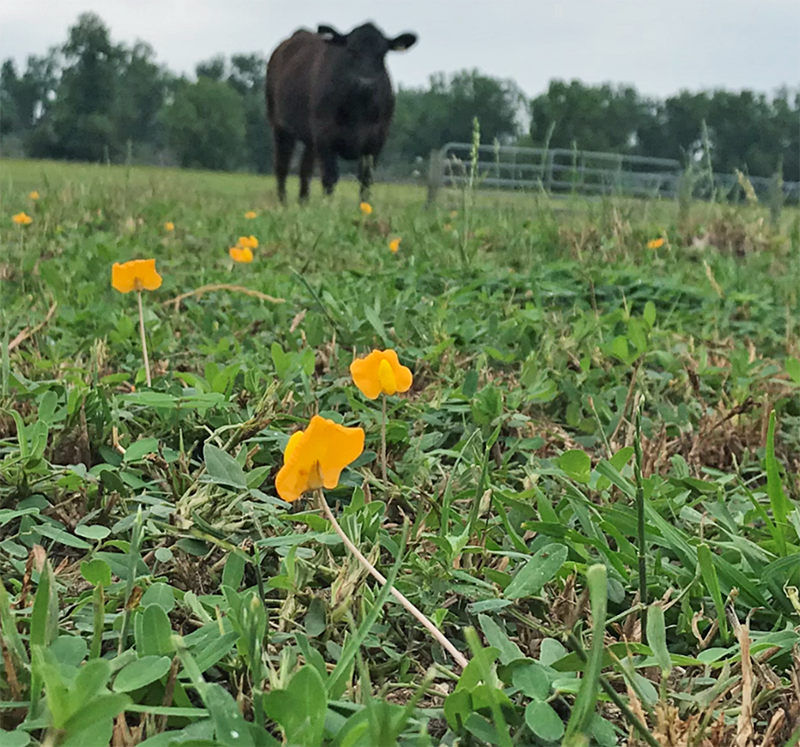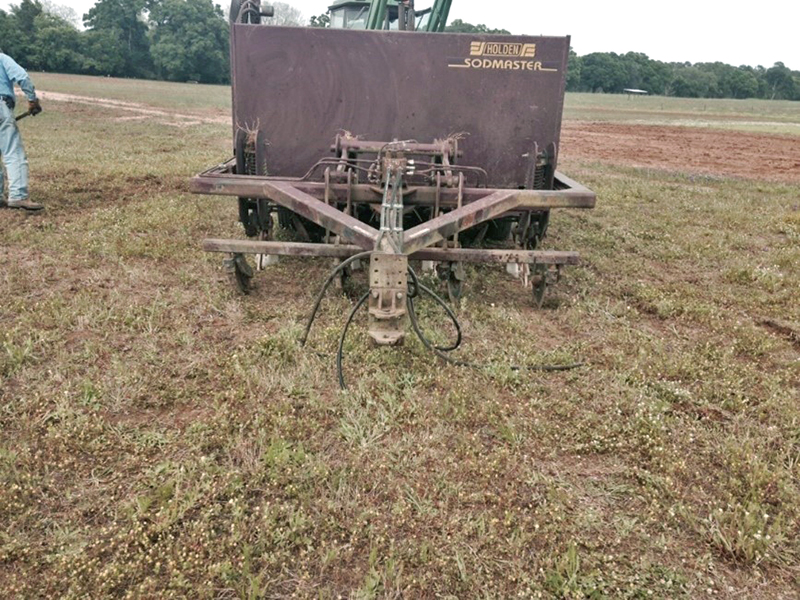Jose Dubeux, Liza Garcia, David Jaramillo, Erick Santos, Flavia van Cleef, Luana Queiroz, Carlos Garcia, Daciele Abreu, Martin Ruiz-Moreno
–
Introduction
Perennial warm-season grasses (e.g., bahiagrass, bermudagrass) are the backbone of livestock operations in North Florida. These grasses are productive, grazing tolerant, and they are adapted to our local environmental conditions. Perennial warm-season grasses, however, need Nitrogen (N) fertilizer to reach their production potentials. Bahiagrass without N fertilizer is not very productive and has poor nutritive value.
Santos et al. (2019) measured herbage accumulation on six cultivars of bahiagrass (Argentine, AU Sand Mountain, Pensacola, TifQuik, Tifton-9, and UF-Riata) without N fertilization. Average annual herbage accumulation across cultivars was 2,500 lbs. DM/acre, with in vitro digestible organic matter (IVDOM) ranging from 46 to 49% and crude protein averaging 8%. Under these conditions, livestock gains per animal and per area would be under the potential productivity of our region. One way to overcome this would be to add N fertilizer to boost productivity, but even then, nutritive value would still limit animal performance potential.
Another approach could be the integration of rhizoma peanut (RP), also known as perennial peanut, into bahiagrass or bermudagrass swards (Figure 1). The advantage of this approach is the biological N2 fixation from RP reduces the need for N fertilizer inputs. Furthermore, the nutritive value of RP is greater than bahiagrass and bermudagrass. Typically, RP has approximately 70% IVDOM and 15-18% CP, which would support greater livestock gains. More importantly, RP is well adapted to Florida conditions and persists well under grazing. Given this win-win scenario, producers should take advantage of cost share programs (NRCS EQIP) that reduce the costs of establishing RP into existing perennial grass pastures.

Figure 1. Ecoturf rhizoma peanut integrated into Argentine bahiagrass pastures at UF IFAS NFREC Marianna, FL. Photo credit: Jose Dubeux, UF/IFAS
–
How to Start
There are multiple ways to integrate RP into perennial warm-season grass pastures. One approach, that saves on establishment costs, is strip-planting RP into perennial grass swards. There is detailed information about this practice in the EDIS publication Strip-Planting Rhizoma Peanut into Grazing Systems. Briefly, strip-planting reduces establishment costs, because instead of planting the entire area you only plant 50% of the area, creating alternating strips of newly planted RP and undisturbed perennial grass. The width of the RP strips could vary to match your planting equipment, as well as spraying and fertilizing machinery. At UF IFAS NFREC in Marianna, the strips are 9-ft wide alternate with 9-ft wide grass strips. With time, RP and bahiagrass will mix (Figure 2).

Figure 2. Mixed swards of bahiagrass and rhizoma peanut. Photo credit: Jose Dubeux, UF/IFAS
–
If the perennial grass pasture is already established, you will need to spray herbicide on the grass to form open strips to plant RP. This approach allows treating the RP strip as a solid RP field during establishment, allowing the use of labelled herbicides. During establishment, the grass strips in between the RP could be used to produce hay. Cattle should not have access during the establishment period, which takes from one to two growing seasons. Another approach to establish mixed swards is to establish the entire area with RP and, after the RP is established, overseed (with a drill) bahiagrass seeds. Finally, if the bahiagrass or bermudagrass is already established, you could strip-till the sod and plant the RP using a sprigger (Figure 3). This approach worked well at UF IFAS NFREC in Marianna, but it is important to reduce competition the grass puts on the RP by mowing frequently during RP establishment (Jaramillo et al., 2018a,b).

Figure 3. Planting equipment to establish rhizoma peanut into perennial grass sward. Photo credit: Jose Dubeux, UF/IFAS
–
Harvesting the benefits
Rhizoma peanut, in association with the soil microbes that fix atmospheric N, add N into the livestock system. The nitrogen in RP cycles back via multiple processes, including animal excreta, litter deposition, and root/rhizome and nodule decay. In addition, RP has better nutritive value than perennial warm-season grasses, such as bahiagrass. As a result, it is possible to replace N fertilizer and improve the livestock gains when adding RP into grazing systems (Table 1). Livestock average daily gains on bahiagrass-RP mixtures were twice as much as those on bahiagrass in a monoculture. Because of that, gain per area was greater on bahiagrass-RP mixtures compared with bahiagrass annually fertilized with 100 lb N/acre (Table 1).

–
Take Home Message
It is possible to replace N fertilizer by integrating rhizoma peanut and also increase livestock gains during the warm season in Florida. Livestock average daily gains are twice as much when grazing on rhizoma peanut as compared to bahiagrass alone without the legume. It is also possible to save on the establishment cost by strip-planting rhizoma peanut on existing bahiagrass pastures and there are cost-share programs (NRCS EQIP) that can reduce the cost for the producer. It may take some time to establish rhizoma peanut, but once established, it will be there for years to come.
–
References
Jaramillo, D.M., J.C.B. Dubeux Jr., C. Mackowiak, L.E. Sollenberger, N. DiLorenzo, D.L. Rowland, A.R.S. Blount, E.R.S. Santos, L. Garcia, M. Ruiz-Moreno. 2018a. Annual and perennial peanut mixed with ‘Pensacola’ bahiagrass in North Florida. Crop Sci. 58:982-992.
Jaramillo, D.M., J.C.B. Dubeux Jr., C. Mackowiak, L.E. Sollenberger, E.R.S. Santos, L. Garcia, M. Ruiz-Moreno, C.S. Silva, N. DiLorenzo. 2018b. Annual and perennial peanut species as alternatives to nitrogen fertilizer in bermudagrass hay production systems. Agronomy J. 110:2390-2399.
Santos, E.R.S., J.C.B. Dubeux, Jr., C. Mackowiak, A.R.S. Blount, D.M. Jaramillo, L. Garcia, J.D. Pereira-Neto, M. Ruiz-Moreno. 2019. Sward responses of bahiagrass cultivars under no nitrogen fertilization. Crop Science 59:2893-2902.
- Grazing Cover Crops is a Triple Win! - August 15, 2025
- How are My Cool-season Forages Recovering from the Snowfall and Low Temperatures? - January 31, 2025
- Integrated Crop-Livestock Systems Improve Soil Health - July 26, 2024
